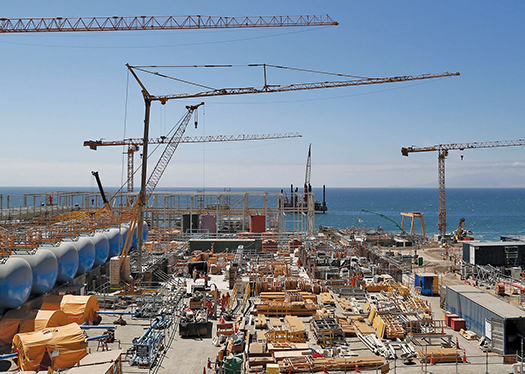
Chile is Latin America’s leader in desalination. Photo shows the Escondida copper mine desalination plant, located near Antofagasta, when that facility was under construction. Another desalination plant currently provides 85% of Antofagasta’s drinking water. (Photo by Chilean Public Works Ministry)
With its rainfall languishing below historical levels for more than a decade, Chile has been looking increasingly to its extensive coastline for relief in the form of desalination projects. The country so far has built desalination plants mostly to serve mines and other industries, but the technology is being used to supply potable water for cities, too. Among them is Antofagasta, whose 360,000 inhabitants—the country’s sixth biggest urban population—rely on a Colombian-owned desalination plant for 85% of their drinking water. The move to desalination has not come controversy-free. Environmental concern about the process has intensified since the inauguration of Gabriel Boric, who became Chile’s president in March after winning office in December with strong support from green advocates. A prominent concern—that concentrated brine waste discharged into the ocean by desalination plants could harm marine life—has drawn comment from Boric himself. “Desalination plants often pump... [Log in to read more]